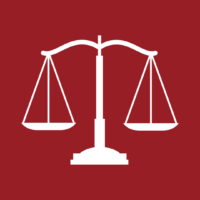Slip & Fall
INTRODUCTION
The term “Slip and fall” commonly comes into practice when a person either slips or trips on someone else’s property and ends up getting himself/herself injured. Such cases are generally sub-categorized under the wide-ranging class action suits known as “premises liability” claims. These accidents generally happen over a property owned or maintained by someone else, in consequence to which, the said property owner can be sued for claiming damages.
In our day-to-day life we come across many instances of Slip and fall, but rarely such instances knock the courtroom’s door. Fortunately, in many cases the victims only have to undergo only a few minor injuries like cuts & bruises, sprain in ankles or wrists etc., whilst on the other side the reality is quite unpleasant. The Slip & fall victims face serious injuries like fractured bones, knee damage, shoulder dislocation, spine and nerve damage etc., which may cause catastrophic impacts over their lifestyle.
ARISING LIABILITY OF SLIP & FALL CASES
As mentioned above the cases of slip and fall hardly reaches the stage of trial. A victim of fall case could directly enter into the process of settlement with the insurance company. To settle a slip and fall case the victim is expected to prove his case beyond a reasonable doubt. Any negligence in proving the above, can strike a detrimental effect upon the victim’s case. The key is to equip oneself with all the appropriate medical and legal help which is required after the incident.
In order to establish the victim’s case beyond a reasonable doubt, it must be proved that such an owner or possessor of the property was aware of the existing dangerous conditions, and it must be shown that:
- The owner/possessor himself developed the conditions;
- The owner/possessor knew the condition existed and negligently failed to correct it;
- For a property owner/possessor to be held liable, it must have been foreseeable that his negligence would create the danger at issue.
- Proving the negligent behavior on the part of the liable party i.e., did the actions of the owner/possessor caused or fail to prevent the slip and fall accident?
- The condition existed for such a length of time that the owner/possessor should have discovered and corrected it prior to the slip and fall incident in question.
The very fact to prove the victim’s case ‘Beyond a Reasonable Doubt’ holds the prime importance in slip & fall cases. Whether that person is pursuing an insurance settlement or filing a personal injury lawsuit, in order to prove his case, all that is required to prove that the property owner—is legally responsible for the damages and injuries caused to him. From the perspective of the injured party, it is pertinent to note that in insurance claim or lawsuit arising out of slip and fall accidents, the crucial element is anticipating and defending against the argument that the injured person’s own carelessness somehow caused or contributed to the accident.
LEADING CASES OF SLIP AND FALL ACCIDENTS
The duty of care owed to an invitee (the plaintiff) by the defendant is: “… not only use care not to injure the visitor by negligent activities, and warn him of latent dangers of which the occupier knows, but he must also inspect the premises to discover possible dangerous conditions of which he does not know, and take reasonable precautions to protect the invitee from dangers which are foreseeable from the arrangement or use”[1]
In the case of Rowe v. Goldberg Film Delivery Lines Inc.,[2] the Hon’ble Supreme Court of Arizona observed that:
If it be true that there was no such sudden or unexpected jerk, slip, or fall which caused the spontaneous pneumothorax, but that it merely arose out of the usual, ordinary, necessary, and expected incidents of petitioner’s occupation, such as lifting and moving the packages which he had in his truck, the injury he suffered was not compensable, because it resulted from the ordinary course of his occupation, and not from an accident occurring therein.
[1] W.L. Prosser, Law of Torts 61 p. 393 (4th ed. 1971).
[2] 435 NW2d 605.
